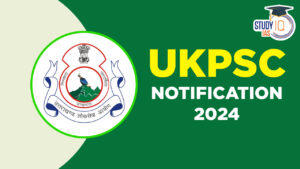Daily Current Affairs for UPSC 2023
Q) Recently seen in news, the ‘Performance Grading Index for Districts’ is released by which one of the following?
- NITI Aayog
- Ministry of Finance
- Ministry of Home Affairs
- Department of School Education and Literacy
Daily Current Affairs for UPSC – 8 July April 2023
Explanation:
- Option (4) is correct: The Performance Grading Index for Districts (PGI-D) has been released by the Department of School Education and Literacy (DoSE&L), Ministry of Education as a combined report for 2020-21 and 2021-22. Performance Grading Index for Districts (PGI-D) has been designed to grade the performance of all districts in school education. The PGI-D is expected to help the state education departments to identify gaps at the district level and improve their performance in a decentralized manner. Ultimate objective of PGI-D is to help the districts to prioritise areas for intervention in school education and thus improve to reach the highest grade. The data is filled by districts through online portal. The indicator-wise PGI score shows the areas where a district needs to improve. The PGI-D structure comprises of total weight age of 600 points across 83 indicators, which are grouped under 6 categories viz.,
- Outcomes,
- Effective Classroom Transaction,
- Infrastructure Facilities & Student’s Entitlements,
- School Safety & Child Protection,
- Digital Learning and
- Governance Process.
Q) Consider the following statements about Sangam Age:
- Tolkappiyam was composed during the first Sangam.
- Sangam literature reflects the social as well as political aspects of ancient Tamil society.
- ‘Melkannaku’ are the didactic Sangam texts whereas ‘Kilkannaku’ are narrative texts.
How many of the statements given above are correct?
- Only one
- Only two
- All three
- None
Explanation:
- Statement 1 is incorrect: Sangam Age refers to the period between the 3rd century BC to the 3rd century AD in South India, especially the area between the river Krishna and Tungabhadra. It bears the name ‘Sangam’ because the kingdom of Pandya organized assemblies where poets, bards, and writers joined from various parts of South India and these assemblies were called ‘Sangamas’. Tolkappiyam, written by Tolkappiyar was product of second Sangam and it is basically a work on Tamil grammar and poetics.
- Statement 2 is correct: Sangam literature reflects the cultural, social, and political aspects of the ancient Tamil society. According to the Tamil legends, there were three Sangams held in ancient South India popularly called Muchchangam. These three Sangams organized over a period of 600-700 years. However, a conclusive historical account of the first two Sangams is not available.
- Statement 3 is incorrect: Sangam Literature is broadly divided into 2 groups-Narrative and Didactic. Narrative texts are called Melkannaku/Eighteen major works consisting of Ettuthogai– Collection of 8 long poems and Pattupattu– Collection of 10 small poems. Narrative texts are considered of heroic poetry in which heroes and wars are glorified. They also give idea of state formation in South India. Didactic texts are called Kilkannaku/Eighteen minor works consisting of Tirukural and Naladiyar.
Q) With reference to Launch Vehicle Mark-III (LVM3), consider the following statements:
- LVM3 will be used in the launch of the Chandrayaan-3 mission.
- The final stage of LVM3 is powered by a cryogenic engine.
- With the help of LVM3, satellites can be placed into Geosynchronous Transfer Orbit.
How many of the statements given above are correct?
- Only one
- Only two
- All three
- None
Explanation:
- Statement 1 is correct: Indian Space Research Organisation (ISRO) is planning to launch the Chandrayaan-3 moon mission in July 2023 with the Launch Vehicle Mark-III (LVM3). LVM-3 was previously known as the Geosynchronous Satellite Launch Vehicle (GSLV) Mark–III.
- Statement 2 and 3 are correct: LVM3 is the new heavy lift launch vehicle of ISRO for achieving a 4000 kg spacecraft launching capability to GTO (Geosynchronous Transfer Orbit) in a cost effective manner. LVM3 is a three stage launch vehicle:
- The first (or bottom-most) stage is in the form of two S200 boosters strapped to the sides of the rocket body. They combust a solid fuel called hydroxyl-terminated polybutadiene.
- The second one liquid core stag is powered by two Vikas engines, which combust a liquid fuel – either nitrogen tetroxide or unsymmetrical dimethylhydrazine.
- The uppermost final stage is powered by a cryogenic engine. It combusts liquefied hydrogen with liquefied oxygen.
Q) Consider the following statements about Nari Adalat:
- These are women-only courts which are set up as an alternate dispute resolution forum.
- The elected members of the gram panchayat can also become members of the Nari Adalat.
- It is legally recognized under the Legal Services Authorities Act of 1987.
How many of the statements given above are correct?
- Only one
- Only two
- All three
- None
Explanation:
- Statement 1 is correct: The Centre is launching Women-Only Courts Initiative (Nari Adalat), a unique initiative of setting up women-only courts at the village level as an alternate dispute resolution forum for issues like domestic violence, property rights and countering the patriarchal system. The scheme would be launched on a pilot basis in 50 villages each in Assam and Jammu and Kashmir from August and would be extended to the rest of the country over the next six months.
- Statement 2 is correct: The Nari Adalat of each village would have 7-9 members. Half of the members would be the elected members of the gram panchayat and the other half women with social standing like teachers, doctors and social workers – who would be nominated by the villagers. Members known as Nyay Sakhis (legal friends) will be nominated or selected by the gram panchayat. The head of Nari Adalat called the Mukhya Nyaya Sakhi (chief legal friend) will be chosen among the Nyay Sakhis. The tenure of the head will be generally six months after which a new one will be selected.
- Statement 3 is incorrect: The Nari Adalat though does not hold any legal status. The platform of Nari Adalat leverages their potential as advisers and leaders within their communities, functioning as a pressure group. The Nari Adalat (women’s court) will address individual cases. It will cater to all women and girls who require assistance or have grievances within the local community.
Q) With reference to Armed Forces Special Powers Act (AFSPA), consider the following statements:
- The respective state government can also notify the extension of AFSPA in that state.
- The government’s decision to declare an area disturbed under AFSPA can be put to judicial review.
Which of the statements given above is/are correct?
- 1 only
- 2 only
- Both 1 and 2
- Neither 1 nor 2
Explanation:
- Statement 1 is correct: The act was amended in 1972 to give powers to the Central government, along with the States, to declare an area as “disturbed”. The notification for extending AFSPA in Manipur and Assam is issued by the respective State governments. A disturbed area is declared under Section 3 of the AFSPA. An area can be disturbed due to differences or disputes between members of different religious, racial, language or regional groups or castes or communities. The Union Government or the Governor of the State or administrator of the Union Territory can declare the whole or part of the State or Union Territory as a disturbed area.
- Statement 2 is incorrect: Armed Forces Special Powers Act (AFSPA), 1958 provides certain special powers to armed forces members operating in disturbed areas in the State of Arunachal Pradesh, Assam, Manipur, Meghalaya, Mizoram, Nagaland and Tripura. The Act is enforced by the Ministry of Home Affairs. The armed forces and the Central Armed Police Forces deployed in specified “disturbed areas” can fire and kill anyone while acting in accordance with law. Security forces can arrest anyone based on suspicion, without a warrant. Individual arrested and taken into custody under this act must be handed over to the officer in charge of the nearest police station. There shall not be any judicial review of the government’s judgment on why an area is found to be disturbed.


 Why is English Important for UPSC IAS Ex...
Why is English Important for UPSC IAS Ex...
 India's Top Trade Partner and Trade Defi...
India's Top Trade Partner and Trade Defi...
 UKPSC Exam Date 2024, Check PCS Notifica...
UKPSC Exam Date 2024, Check PCS Notifica...

















